[Fair warning: this stock is not for the faint of heart! Graphic chicken bits ahead. Deliciously carnivorous discretion is advised.]
I did it!
I made my very first chicken broth, with my own two hands in my own little kitchen. I’ve been waiting for this day for quite some time. I’d been putting it off not out of intimidation or my own hesitation, but necessity. We didn’t even have a kitchen, much less a stove to prepare such things, for quite some time.
But, we’ve got our tiny cottage-sized gas oven range now, and I’ve been collecting bones from good chickens in preparation for making this all-important staple of a traditional foodie’s kitchen.
Go Big or Go Home.
I had a couple chicken carcasses from roasting whole birds, but I wasn’t about to stop there. I had zero reservations about getting down and dirty with this stock.
Gizzards? Necks?
Feet?
Heads?? — beaks, eyes and all?!
In they went.
I had a lovely assortment of these various parts from healthy, pastured chickens, given to me from a farmer at the market. They had been waiting in the freezer for this day.
I threw it all in the pot:
- Two carcasses stripped of their meat/bones from the whole bird
- A few whole heads/necks
- Some feet
- Half an onion, cut into chunks
- Two carrots, snapped into big pieces
- A few pieces of celery
- A couple garlic cloves
- Couple tablespoons vinegar
- A gallon of filtered water (that’d be 4 quart-sized mason jars, if you had to google it like I did to be sure. You’re welcome.)
I let it sit out for about an hour, since the chicken parts were frozen, and since the recipe from Nourishing Traditions calls for the mixture to stand for at least 30 minutes before cooking. I then brought it to a boil, and tried removing the “scum” I was supposed to be watching out for — but I don’t think there really was any. It just looked like bits from the chicken carcasses floating to the top.
Then I turned the heat down to let it simmer. On the lowest setting, however, our tiny gas range still packs a punch. The whole thing continued to boil. So, I decided to put it all in the oven and set it on a low temperature that would allow it to properly simmer for the rest of the day, and overnight.
Once the cottage started to get a little too hot the next morning with the oven still on, I decided to take it out. My stock had been brewing for about 21 hours. You’re supposed to let it cook for at least 6, so I figured this was still a decent amount of time. Oh, and I was supposed to put some parsley in the stock during the last 10 minutes for flavor — but forgot. Oops!
Storing my stock
I removed some of the veggies and chicken parts with a slotted spoon, then started pouring the liquid through a coffee filter in a bowl to filter it.
This would probably be much easier with a regular colander lined with some cheesecloth perhaps. Then, I poured it all into a large glass jar to cool.
Once it was near room temperature, I put it into the fridge, expecting the fat to congeal at the top to be scraped off and used for cooking. (Like I would throw away perfectly good fat!!) But, my stock didn’t do this. It was all still liquidy! And wasn’t gelatinous, despite having added several collagen-filled feet in there. Humph.
So, I got over that, and then I took a tip from Cheeseslave and poured out the stock into ice cube trays. This way, they are pre-measured in one-ounce cubes to be used in your cooking. I popped out the frozen stock cubes and put them in a ziplock bag for storage in the freezer. Easy!
Now I can use my cubes of stock for cooking rice, making soups, or in any recipes that call for stock — without resorting to that nasty MSG-laden canned stuff from the store!
So, what do you guys think — did I do okay? What was your first experience making stock like? Or if you haven’t tried this yet, are you feeling up for the task? (You don’t necessarily have to use scary chicken heads and feet, you know. ;))
[This post is being shared with Simple Lives Thursday!]
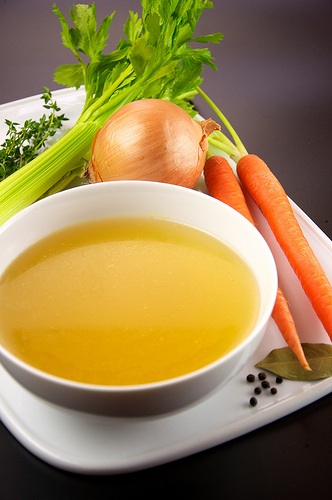
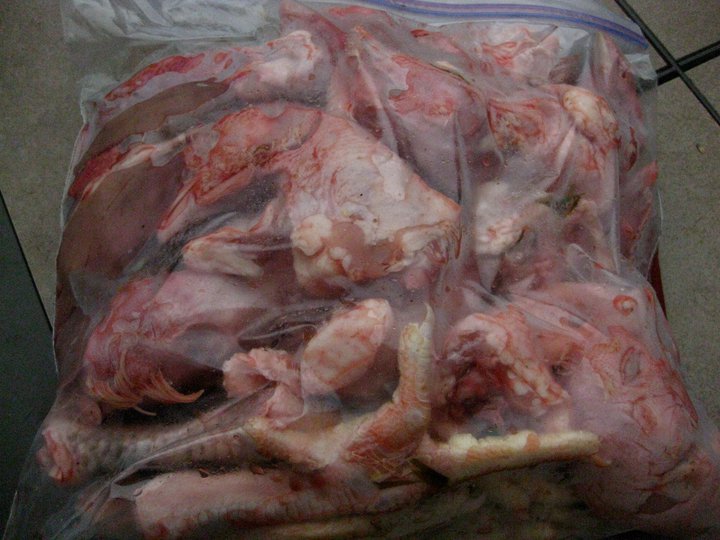
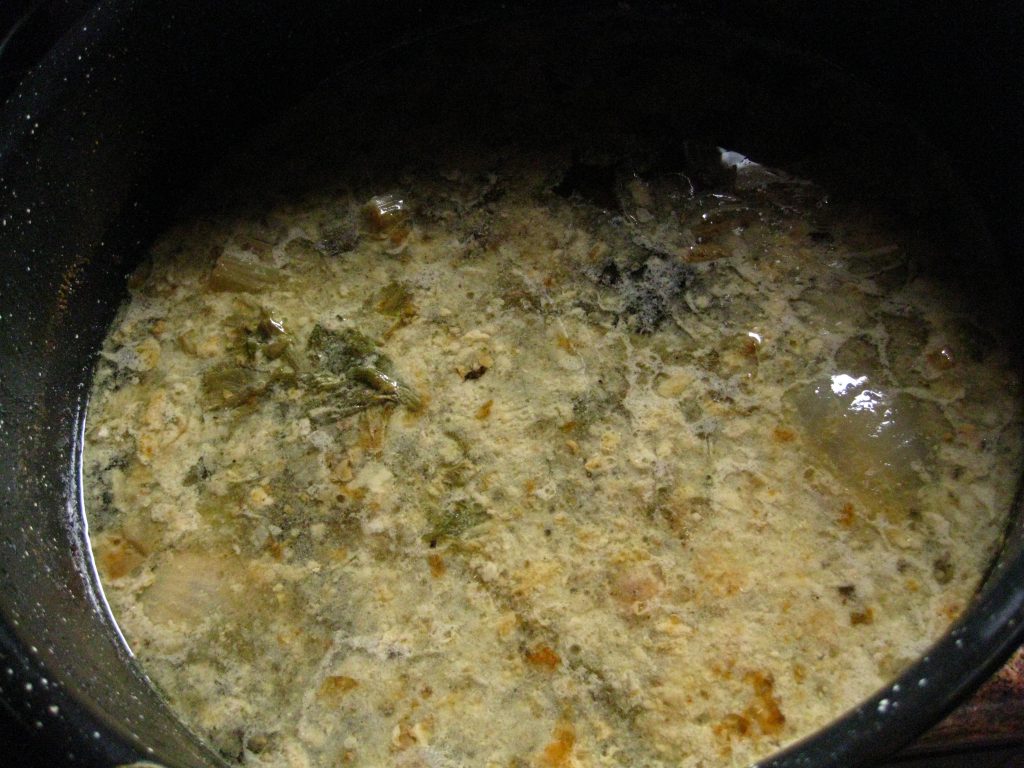
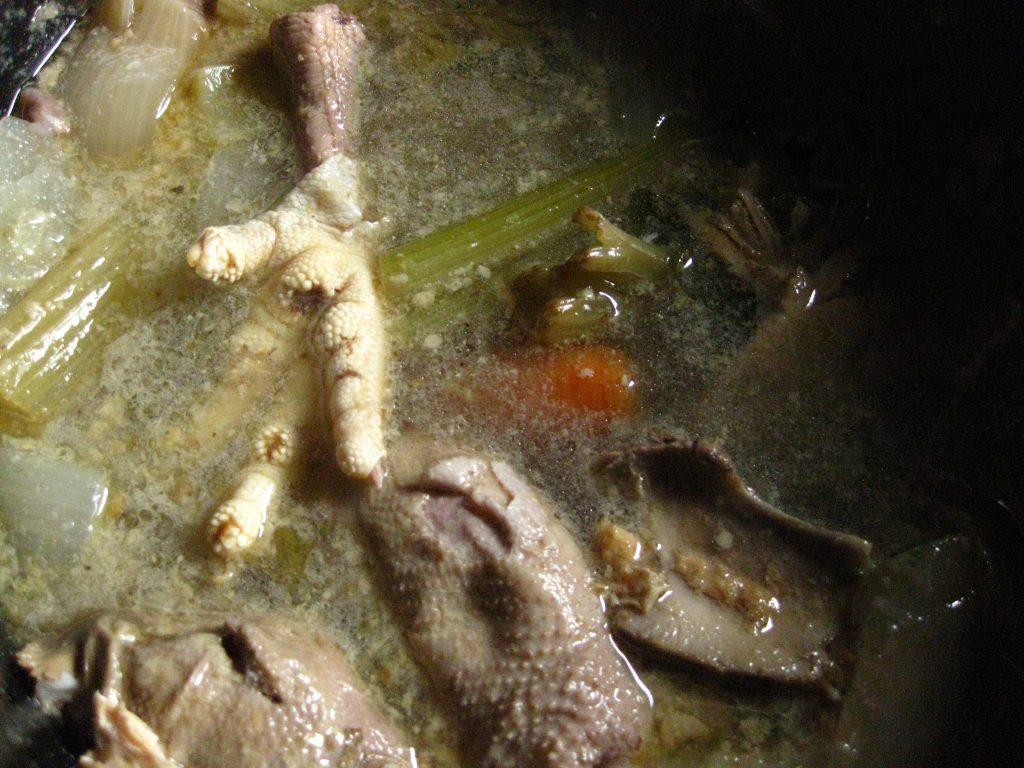
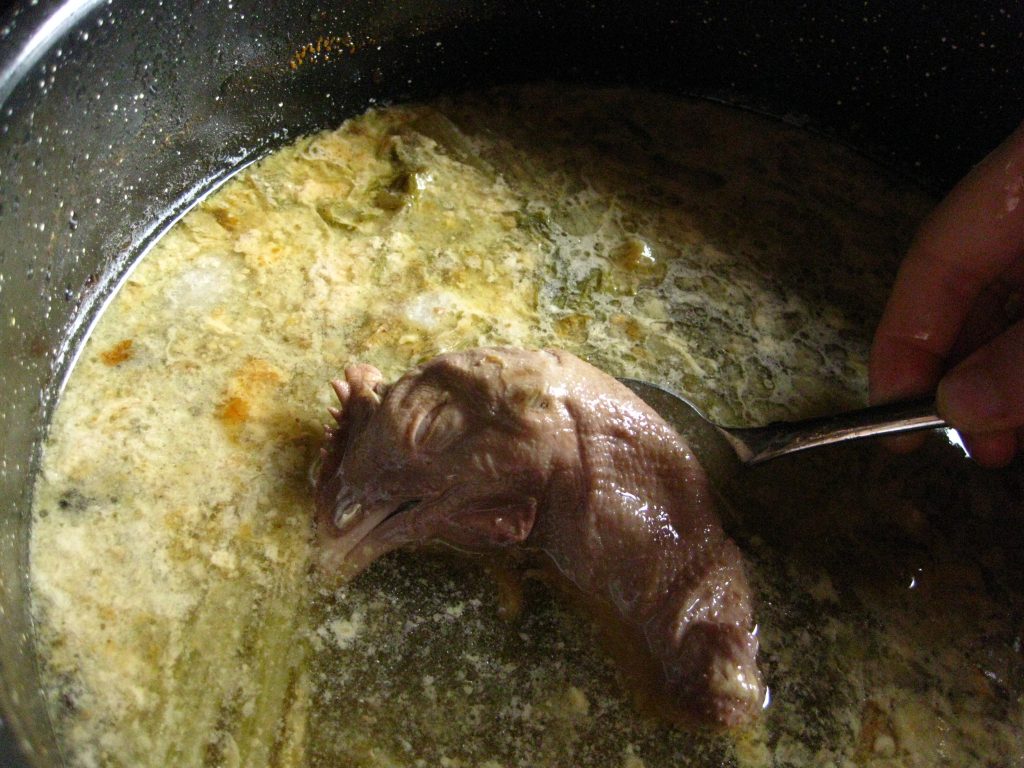
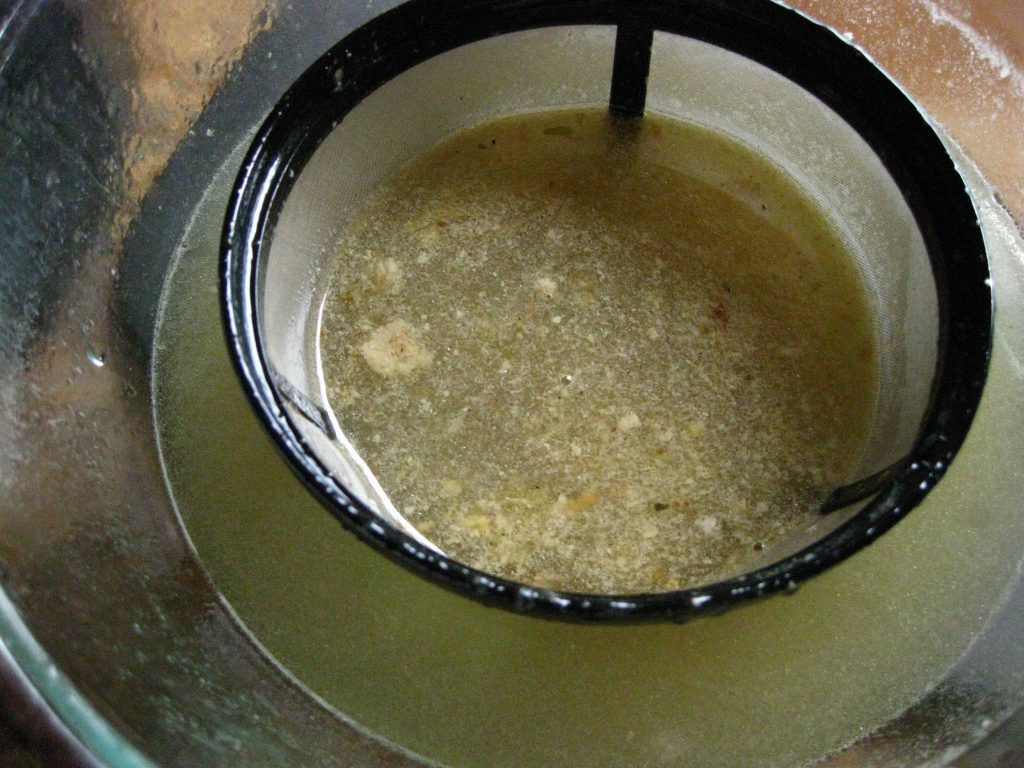
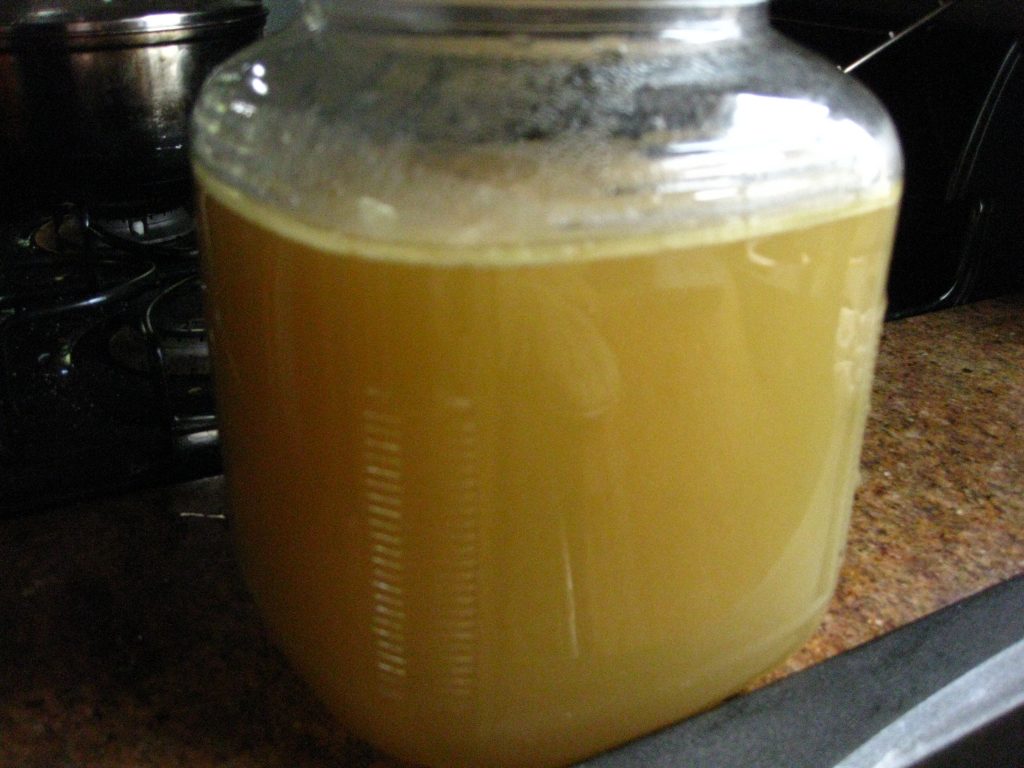
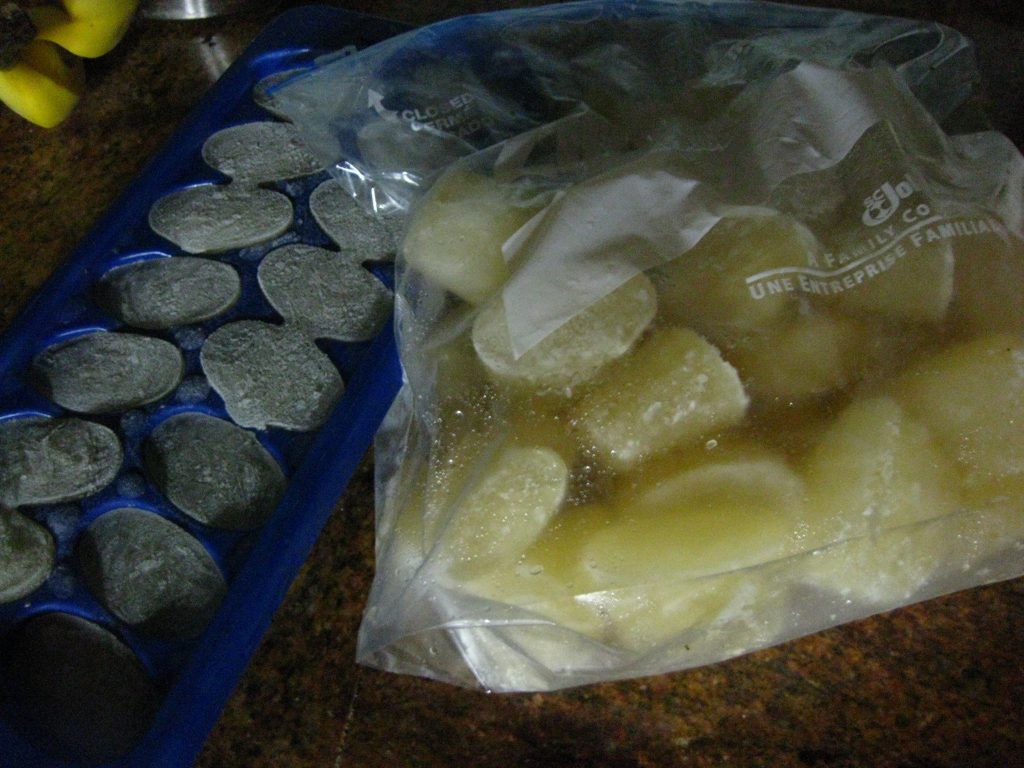
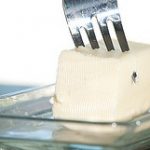


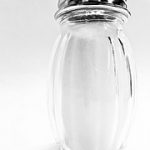
Ok, I have a question about the chicken heads — do they have any feathers on them any more? I asked our farm about getting chicken heads, and they get the chickens from the farmer’s cousin, and the lady that runs the store wasn’t sure that the heads would be de-feathered, since they cut the heads off before they remove the feathers. And I don’t think I want feathers in my stock! 🙂 So I’m just wondering about your chicken heads!
Good question, Megh! Mine came to me with only a couple stray feathers I plucked. Now that you mention it, it seems like they wouldn’t normally bother to de-feather the head after it’s chopped off. But they did with mine! Maybe they did knowing whoever would be using the heads would want them for stock — and yeah, that would get pretty gross with them falling out in it! Haha!
ya done good!!! mine never gels either.. no matter what!!!
Thanks Tammy! Yeah, what the heck is up with that?! I thought for sure mine would. Better luck next time I guess!
Awesome! I love to make chicken stock! So healthy for flu season and great to eat on cold winter nights!
Looks delicious! I may try making some really good stock like that, albeit probably not with heads since I don’t think I can find those. The Asian markets have the feet!
I like the caption, “sleep tight, chicky!”
My first stock didn’t gel either. It just means you used too much water. I have my third potful simmering away right now (complete with feet this time). I usually cook it for two days, and just a a leek, one carrot, a bay leaf, peppercorns and thyme. I think celery overwhelms the taste. Yours looks really good. I go through a quart or so a week now. I’ve made beef and fish stocks too (beef is the hardest to get right). The fish stock turned into really firm jelly (I used a 6 pound grouper head!). Even if it doesn’t turn out perfectly, it’s still much tastier and more nutritious than anything you can purchase. Congrats!
Thanks, Laura! Ohh, so maybe if I added even more feet next time it might be the right ratio to gel it? I wonder also if it would have cooked for 48 hours like you did, it might have worked. Great ideas on the flavoring, I will have to try that! Oh and fish stock is totally next on my list. Can’t wait!
I usually use three feet with one chicken carcass and no heads. I use just enough water to cover the top of the chicken and veggies to where you can still see stuff poking out a little bit. you dont get as much broth from using this little water but man, does it sure become gelatinous!
Try throwing in some extra wings or necks as those joints contain the most amount of the gelatine… and I’m not sure if this is GAPS ok or not but if you toss the wings in some milk powder and roast them first you will release more of the nutritious gelatine – saw it on a heston blumenthal episode once so maybe you can google it!
The last time I made chicken stock (with just some breastbones) it gelled, but I’ve never had it gel before. The stuff you buy in the store isn’t gelled, so I figure it’s fine. My family loves it. I don’t eat meat (just don’t like it) so I sometimes make veggie stock. I save peelings from scrubbed potatoes, and carrots, onion skins, celery leaves and bases, tough green parts from leeks etc in a bag in the freezer then pull from that to make stock every so often. I was told I could put anything in there (although cabbage, peppers and broccoli tend to have a strong taste. This last time I tried the crockpot (less likely to boil all over my stove, or boil away completely) and it smelled lovely when I woke up the next morning. So glad you’re sharing your life with us!
Ahh a crockpot! I would totally do that if I could. Our house runs on solar panels though, so using electronic appliances at nighttime (when there’s no sun!) doesn’t always work in our favor, haha! I am going to try to cook it in a solar oven next time, during the day, then in the gas oven at night. Veggie stock sounds like a great idea too! Thanks, Lisa!
You are lots of fun, “sleep tight, chicky!” was excellent. I think we were just freaking out and worried when we first tried it, we were scared the house would burn down or something, I’m pretty sure it did set off a smoke detector in the middle of the night. We do it in a slow cooker now, so awesome and simple, we make chicken, we eat chicken, then what’s left goes into the crock. Right on, right on. Isn’t it great to be getting into this stuff now, when we are young, before we have kids. This real food thing isn’t easy, but it’s such a blast.
Yeah, cheesecloth in a colander is definitely the way to go for straining broth. It also makes clean up easier because you can just toss the cheesecloth with everything in it. This is also why I want to get better cheesecloth so I can hopefully reuse it, the stuff available in the grocery store could not hold up for a second time.
I know this post is a few months old, but I wanted to follow up on the gelling. I make my stock 4 gallons at a time, that way I only have to do it every month or so. But I use about 15lbs of chicken backs for mine and I put in around 8 to 10 feet. I also cook mine for a minimum of 24 hours. I always end up with a giant pot of jelly the next day. I also leave a bit of fat in since for me it improves the taste.
When starting out it always seems like I have a lot more chicken than water.
Those are great tips, Jeremiah, thank you! Wow, good for your family for consuming a whole gallon of stock a week! I’m going to try to up the chicken-to-water ratio next time, I bet that will definitely help with the jelly factor.
You did well. I also will do this in my crock pot. I haven’t bought stock in a LONG time (well not chicken or vegetable). I am still tweaking the beef broth though. I use chicken the most but for french onion soup, nothing beats beef broth (nice and rich).
I’ve found that once the stock is done if you put it in a cake pan and into the oven at 400 for an hour or two it will reduce down considerably and become quite concentrated. A little goes a long way. Saves space in my freezer that way.